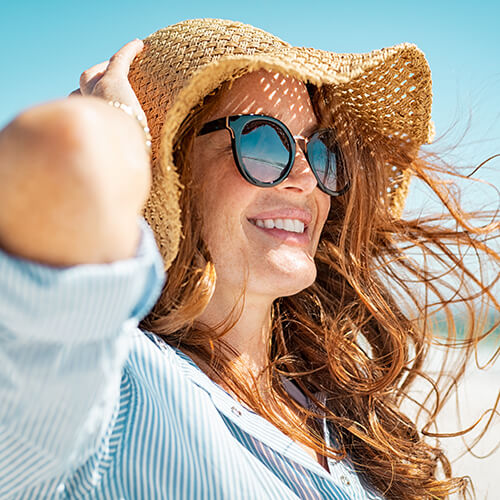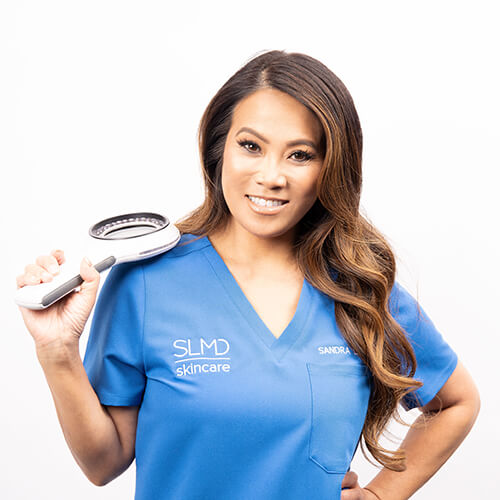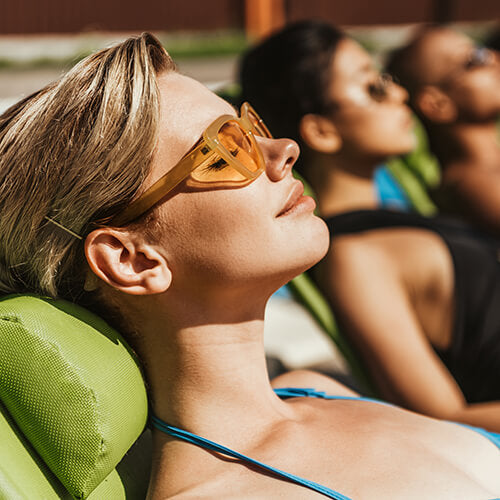
7 Sunscreen Myths That Are Causing Serious Damage
Think you’re up to speed on sunscreen facts? Even if you never skip it during a day in the sun, chances are you’re harboring a misconception (or many) about the importance of UV protection. We asked Dr. Sandra Lee (aka Dr. Pimple Popper) to clear up 7 sunscreen myths that could be causing you serious skin damage.
Published:
6 minute read
Think you’re up to speed on your sunscreen facts? Even if you never skip it during a day of fun in the sun, chances are you’re harboring a misconception (or many) about the importance of UV protection.
Just when you thought it was safe to go outside…here are 7 sunscreen myths that could be causing you serious skin damage.

6 minute read
Article Quick Links
#1 SPF tells you how long you can stay in the sun
Sun protection factor (SPF) is one of those things that people claim to understand, but really can’t explain. While most of us have the right idea — higher is better, sort of — turns out it’s more complicated than it seems.
We could spend a while diving into all the details (we did, here), but know this: the SPF number doesn't really translate to how many extra hours you can spend in the sun before you burn. And although it's in theory a factor of how many times longer you can spend in the sun, in real life, things aren't that simple.
The sun protection factor is a ratio of how many UV rays a product allows to penetrate your skin: SPF 30, for example, permits only 1 out of 30 rays to damage your epidermal cells. SPF 50, in turn, allows only 1 out of 50 rays in.
All of you math enthusiasts will recognize that this means as the SPF number gets higher, the added protection benefits diminish. If you don’t dig fractions, here’s a fact: there’s so little difference between SPF 50 and SPF 100, the FDA is deciding if it’s too misleading to even allow levels higher than SPF 60 on the label.
#2 The better your base tan, the less sunscreen you need
For all our friends who need to hear this: there’s no such thing as consequence-free tanning. Not from a salon, and not from the sun. We’ve warned you about studies indicating that UVB rays cause DNA damage, even if you never get a sunburn. And that UVA rays are responsible for as much as 90% of skin aging.
But we’ll spell it out for those of you who like to go from SPF 50 to zero between Memorial and Labor Day: you’re still getting burned — so to speak.
Yes, it’s true that for people who tan, sunburn may become less likely as the skin acclimates to repeated exposure, turning progressively darker. You might call that building a base — but in reality, it’s your skin’s frantic attempt to counteract radiation bombardment by producing more and more melanin.
Potato, potahto, right? Not exactly: your skin making more melanin to safeguard against sunburn isn’t the only side effect of tanning. There’s a whole host of UV-exposure induced chemical reactions going on inside your skin that even all that extra melanin can’t counteract. Like irreversible DNA damage — and that’s how you get things like saggy, leathery skin, and cancer.
#3 Skin that’s already dark doesn’t need sunscreen
This rumor is pretty pervasive, in part because there’s a bit of truth to it: the pigment in darker skin tones does offer some level of protection from ultraviolet radiation. But here’s where the confusion usually starts: that natural SPF boost doesn’t mean it’s impossible for darker skin to get sunburned. And it doesn’t exempt someone from photoaging or skin cancer, either.
So why the misunderstanding? It could be because sunburn typically doesn’t show up on darker skin the way it’s most commonly described in our culture — so it tends to go unrecognized. While overexposure leads to pink to red hues for lighter-skinned people, it can manifest more subtly in those with darker skin — and can be mistaken for a “tan.” Which is also problematic terminology, btw, for obvious reasons.
The bottom line? No matter what skin tone you have, you need sun protection, because UV rays don’t discriminate.
#4 You only need sunscreen in summer
Let’s simplify: unless the sun never rises where you live, you need sunscreen. As dermatologist Dr. Sandra Lee (aka Dr. Pimple Popper) says, you need protection from UV rays when it’s cloudy. And when it’s cold out. And when you’re inside (UVA rays aren’t blocked by glass).
We know this can be confusing, so think about it this way: during the daytime, the sun is out — even if it’s hiding behind storm clouds. Yes, some of that UV radiation is surely blocked, but not all of it. This is why it’s still possible to burn, even on cloudy days. Over a lifetime, the damage adds up.
#5 Wearing sunscreen prevents your body from making vitamin D
Research is revealing just how important vitamin D is for our health, from immune function to bone density and brain health. This fat-soluble nutrient — which actually behaves more like a hormone — is produced when UVB rays hit our epidermis. It’s a little more complicated than that, but sunlight is essential for jump-starting the process.
So doesn’t slathering on sunscreen deprive us of our innate ability to make vitamin D? Well, kind of. But most experts agree that we’re not even close to diligent enough in our SPF application to hinder our vitamin D production. Besides, if you’re using chemical sunscreen, it doesn’t fully activate for about 15 minutes after you apply it — which means you’re probably getting too much unprotected exposure, anyway.
So where’s the sweet spot? Dermatologists estimate that depending on skin tone, we need somewhere between 5 and 30 minutes of sun exposure several times weekly. Less for those who burn easily, and more frequently for those who live further from the equator (and in wintertime). Talk to your dermatologist to learn what’s best for you.
#6 Sunscreen is waterproof
Here’s the truth: it’s not possible to make any sunscreen waterproof. Some formulas, however, have more staying power than others. Maybe you’ve noticed that some sunscreen labels now say “water-resistant” instead of “waterproof.”
This is because recently, the FDA prohibited manufacturers from claiming that a sunscreen could be waterproof or sweatproof — again, because it’s just not possible. They also banned the term sunblock, because, well…that’s just downright misleading.
#7 All sunscreen is basically the same
Nope: not even close. For starters, there’s chemical sunscreen, and there’s physical sunscreen — each has their pros and cons, says Dr. Lee. Chemical sunscreens absorb UV radiation and turn it into heat that’s released, whereas physical sunscreen acts like a reflective shield so the rays never even penetrate your skin.
And then there’s the whole SPF and broad-spectrum thing: if you’ve been following along, you know you need both. That’s because SPF only measures protection against UVB rays, while broad-spectrum formulas offer UVA benefits too.
Don’t forget about all the “not sunscreen” ingredients in your sunscreen: all that other stuff in there can make or break your sun protection product. A lot of sunscreens, for example, are occlusive and irritating — especially ones with higher SPF levels. This is bad news for all skin types, but particularly for those with acne-prone skin.
The last thing people need, says Dr. Lee, is having to choose between UV protection and keeping breakouts at bay. So look for formulas labeled non comedogenic or won’t clog pores, like SLMD Dual Defender. It’s a broad-spectrum SPF 30 sunscreen and moisturizer, infused with antioxidants vitamin C, green tea and grapefruit extract — and it’s safe for acne-prone skin.
Dr. Lee’s last word
As much as we dermatologists try to get the word out, people still have a lot of false beliefs about sunscreen. The fact is, sunscreen is the most important product you can have in your skincare routine. Find a high-quality product that offers broad-spectrum protection and doesn’t clog your pores, like my SLMD Dual Defender.
—Dr. Sandra Lee





